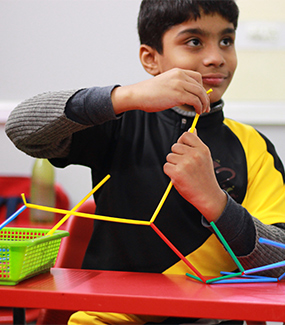
DOES YOUR CHILD WALK ON FEET? Toe walking
Have you ever noticed that your child walks on toes? Have you seen with normal gait patterns suddenly the child starts walking on foot? Do you know why your child walks on the toe? What could be the reason? Even after your several attempts, your child walks on the toe.
Let’s find out why children walk on their toes?
Toe walking is a common developmental pattern, a child adapts to their early age which is characterized by a child walking on their toes, with little or no heel contact with the floor throughout the majority of their day. Although the balance of the child is normal he may walk and follows a common walking pattern but he will walk on toes.
Some amount of toe walking is normal and expected for children as they explore movement as young walkers. Toe walking is considered normal within 6 months of the start of independent walking. A child should be walking with their feet flat on the floor by 2 years of age and should be walking with a heel-to-toe pattern by 3 years of age. 1
However, if the toe walking persists past this age, seeking medical attention is recommended (American Academy of Orthopaedic Surgeons, 2017; Mayo Clinic, 2018).
Consequences of toe walking
If your child is still toe-walking after age 2, there may be an underlying condition such as a short Achilles tendon that prevents the heel from touching the ground; a movement or muscular disorder such as cerebral palsy and muscular dystrophy; autism spectrum disorder, idiopathic toe walking or simply habit. For some toe-walkers, the vestibular system may not be giving the brain accurate information on body position and movement. Or, sensory processing disorder can make a child oversensitive to touch. These kids rise up on their toes to avoid uncomfortable surfaces or discomfort from the sensation of weight against their heels. They may also avoid socks, shoes, and even bare feet. Consequently, toe walking can lead to pain in ankles, knees or hips; difficulty with squatting or climbing stairs; and decreased hip or core strength due to postural alignment issues.
A recent article in the Journal of Child Neurology investigated the differences between the motor skills and sensory processing abilities of children who do and do not have an idiopathic toe walking gait. Sixty children (30 with idiopathic toe walking and 30 without), ages 4 through 8, were tested with a number of norm-referenced assessments.
The results indicated that when compared to children who did not toe walk, children with an idiopathic toe walking gait had:
- different Sensory Profile quadrant scores
- poorer performance on the Bruininks–Oseretsky Test of Motor Proficiency
- lower vibration perception threshold
- poorer performance on the Standing Walking Balance subtest of the Sensory Integration and Praxis Test.
It has been observed in the finding of the article that children walk on toes might have cognitive-perceptual, sensory processing issues.
Is toe walking a concern?
Although toe walking seems harmless, it can impact your child’s safety during walking and gross motor play. Toe walking puts the child at an increased risk of tripping and falling because they are not picking up the front of their foot, causing decreased clearance between their foot and the ground. Many parents of children who toe walk report that their child may trip and fall if he or she is not watching where they are walking.
Children who toe walk may have an increased or decreased sensitivity to sensory information. This means that they process information differently through the vestibular, tactile, and proprioception systems, which may make it difficult to coordinate body movements. The body’s vestibular controls our sense of movement and balance. Children with sensory issues related to the vestibular system have a different awareness of their body position and feel stabilized while toe walking.
Prolonged toe walking puts an abnormal amount of stress on the bones and ligaments in the ankles, knees, and hips. Over time this can cause the bones to grow incorrectly and/or overstretch ligaments which further puts the child at risk for injuries and joint pains as they grow.
Toe walking also decreases the child’s base of support, which makes it harder for them to balance. If you try to stand on your toes instead of flat feet, you will notice that your body sways more and you may feel unsteady. This unsteadiness makes it harder to balance during walking, jumping, and hopping. As the child continues to toe walk, their heel cords become tight and their ankle dorsiflexors (muscles that lift the foot upward) become weak. This can make stair navigation, squatting and jumping more difficult because of this decreased flexibility and strength

causes a child to walk on their toes
- Tight calf muscles: a normal heel-to-toe walking pattern requires 10-20 degrees of ankle dorsiflexion (toes up). May affect one or both legs.
- Leg length discrepancy: one leg is longer than the other, resulting in compensations seen when walking. Toe walking may often occur on only one leg.
- Underlying medical diagnoses such as Autism, Cerebral Palsy, or Muscular Dystrophy
- Sensory: a child can walk with heels down when asked. Therefore, toe walking is more of a preference. The child may present with tactile defensiveness, walking on their toes so that less of their foot is in contact with the floor. Additionally, a child may be seeking additional proprioceptive input through the joints of their feet. By walking up on their toes, their body weight is centralized to one location, therefore providing extra input

Toe walking and Autism
A dysfunctional vestibular system, a common problem in autism, may be responsible for toe walking. The vestibular system provides the brain with feedback regarding body motion and position. It may be possible to reduce or eliminate toe walking by providing the person with therapeutic vestibular stimulation (e.g., being swung on a glider swing).
Well, Toe walking is not always related to autism or the child dealing with ASD has a possibility of toe walking, but this has been seen in many patients that child might involve the feature of Toe walking
signs/symptoms of toe walking?
Many children who walk up on their toes may demonstrate any or all of the following (American Academy of Orthopaedic Surgeons, 2017; John Hopkins Medicine, 2019):
- Tightness within the calf muscles and/or a short Achilles tendon
- Foot or leg pain
- Developmental delays, especially with balance skills and those related to jumping
- Problems wearing shoes such as high tops
- Increased difficulty participating in activities such as roller-skating or ice skating
- Decreased endurance with walking or running
- Walk on toe commonly seen feature
What to do?
Your child’s pediatrician is likely to refer your child to physical therapy and Occupational therapy if a sensory issue, to assist with addressing your child’s toe walking in a conservative manner. you need to see your child developmental pattern make videos of your child’s toe while walking or standing A physical therapist can assist with developing a strengthening and stretching program for your child’s tight calf muscles to facilitate the obtainment of the necessary ankle dorsiflexion (toes up) range of motion needed to utilize a heel-to-toe walking pattern. They will provide necessary gait training and assist with developing strategies to be utilized at home to correct your child’s walking pattern, an occupational therapist helps you to overcome the sensory symptoms associated with toe walking with orthopedic correction which involves casting , splints depending upon the need of child
It is essential for parents to learn as much as possible about the toe walking as I always mention in my blogs two children are not the same, the symptom might fade out with the development you need to discuss with the medical practitioners but keenly observe and if you find a sign don’t think twice to bring your child to the doctor.
you’re concerned, be sure to speak up at your next appointment with your pediatrician. Be an advocate for your child – you know him better than anyone! Get things taken care of before something small turns into something that will take more serious measures to correct














